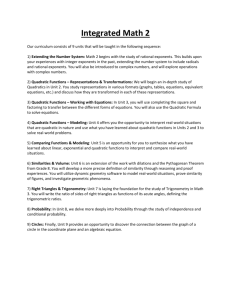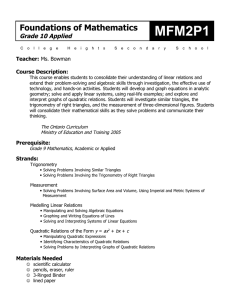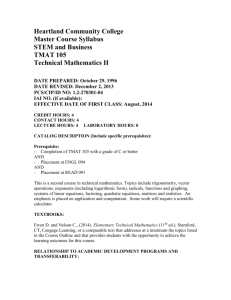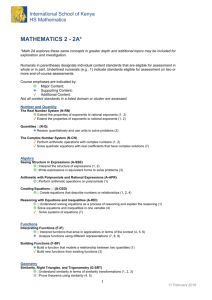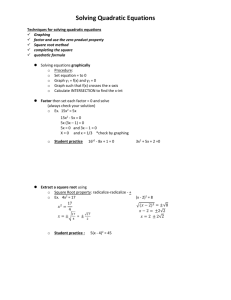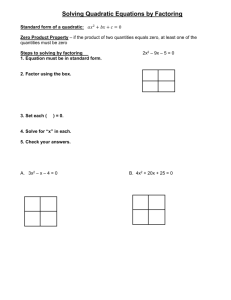Family Letter - Word - Illinois Open Educational Resources
advertisement
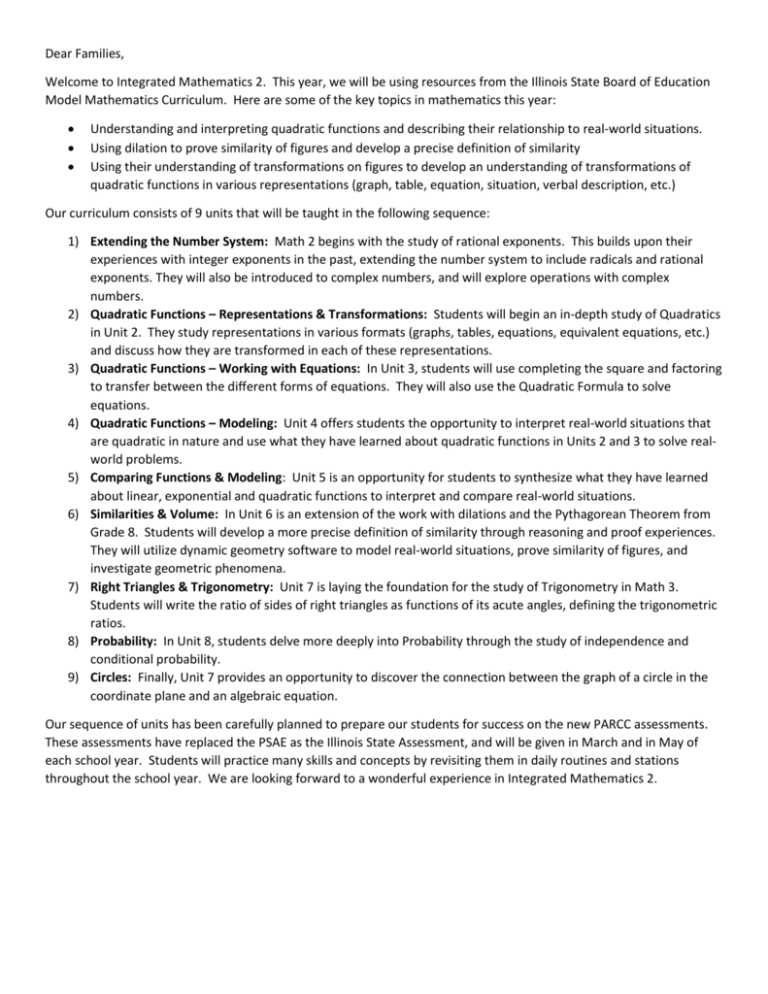
Dear Families, Welcome to Integrated Mathematics 2. This year, we will be using resources from the Illinois State Board of Education Model Mathematics Curriculum. Here are some of the key topics in mathematics this year: Understanding and interpreting quadratic functions and describing their relationship to real-world situations. Using dilation to prove similarity of figures and develop a precise definition of similarity Using their understanding of transformations on figures to develop an understanding of transformations of quadratic functions in various representations (graph, table, equation, situation, verbal description, etc.) Our curriculum consists of 9 units that will be taught in the following sequence: 1) Extending the Number System: Math 2 begins with the study of rational exponents. This builds upon their experiences with integer exponents in the past, extending the number system to include radicals and rational exponents. They will also be introduced to complex numbers, and will explore operations with complex numbers. 2) Quadratic Functions – Representations & Transformations: Students will begin an in-depth study of Quadratics in Unit 2. They study representations in various formats (graphs, tables, equations, equivalent equations, etc.) and discuss how they are transformed in each of these representations. 3) Quadratic Functions – Working with Equations: In Unit 3, students will use completing the square and factoring to transfer between the different forms of equations. They will also use the Quadratic Formula to solve equations. 4) Quadratic Functions – Modeling: Unit 4 offers students the opportunity to interpret real-world situations that are quadratic in nature and use what they have learned about quadratic functions in Units 2 and 3 to solve realworld problems. 5) Comparing Functions & Modeling: Unit 5 is an opportunity for students to synthesize what they have learned about linear, exponential and quadratic functions to interpret and compare real-world situations. 6) Similarities & Volume: In Unit 6 is an extension of the work with dilations and the Pythagorean Theorem from Grade 8. Students will develop a more precise definition of similarity through reasoning and proof experiences. They will utilize dynamic geometry software to model real-world situations, prove similarity of figures, and investigate geometric phenomena. 7) Right Triangles & Trigonometry: Unit 7 is laying the foundation for the study of Trigonometry in Math 3. Students will write the ratio of sides of right triangles as functions of its acute angles, defining the trigonometric ratios. 8) Probability: In Unit 8, students delve more deeply into Probability through the study of independence and conditional probability. 9) Circles: Finally, Unit 7 provides an opportunity to discover the connection between the graph of a circle in the coordinate plane and an algebraic equation. Our sequence of units has been carefully planned to prepare our students for success on the new PARCC assessments. These assessments have replaced the PSAE as the Illinois State Assessment, and will be given in March and in May of each school year. Students will practice many skills and concepts by revisiting them in daily routines and stations throughout the school year. We are looking forward to a wonderful experience in Integrated Mathematics 2.
